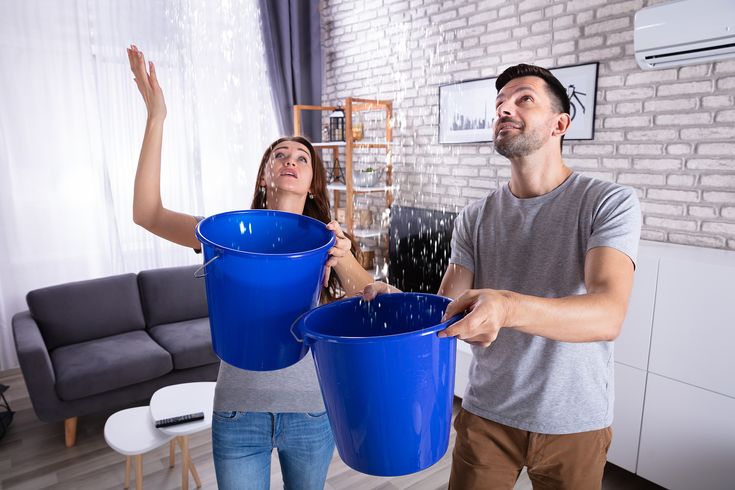Water is essential to every home—but when it escapes the confines of pipes and appliances, it becomes one of the most destructive forces your property can face. From swollen floors and ruined walls to mold infestations and costly repairs, water damage can turn a comfortable home into a financial nightmare. The key to avoiding these disasters lies in one crucial skill: effective Leak detection Liverpool. Knowing how to find and stop leaks before they spiral out of control is the cornerstone of water damage prevention.
The Cost of Water Damage
Even a small leak can have huge consequences. A dripping pipe or a faulty connection under your sink may seem minor at first, but over time, that moisture can erode wood, corrode metal, and create the perfect environment for mold. According to home repair experts, the average water damage repair can cost thousands of pounds or dollars—and that doesn’t include the emotional toll of losing irreplaceable items or being displaced during repairs.
The reality is simple: prevention costs far less than restoration. Early leak detection is the most effective and affordable form of home protection.
Common Causes of Home Water Leaks
Leaks can originate from several sources throughout your home. Understanding where they commonly occur helps you monitor the right areas. Some of the most frequent culprits include:
- Worn-out pipe joints: Over time, pipes expand and contract, loosening seals and causing drips.
- Appliance connections: Washing machines, dishwashers, and refrigerators often develop slow leaks at hose or valve points.
- Roof and gutter issues: Damaged shingles or blocked gutters can allow rainwater to seep inside.
- Faulty water heaters: Aging tanks or corrosion around fittings are warning signs of potential leaks.
- Toilet and sink seals: Deteriorating gaskets or cracked caulking allow water to escape unnoticed.
By identifying these vulnerable points, you can schedule regular checks and maintenance before trouble begins.
Early Signs of a Hidden Leak
Some leaks are obvious—a puddle under a pipe or a dripping ceiling. Others are hidden and require careful observation to detect. Keep an eye out for:
- Unexpected water bill increases. A steady rise often indicates an undetected leak.
- Musty odors. Persistent damp smells suggest trapped moisture or mold growth.
- Stains or bubbling paint. Water behind walls or ceilings can cause discoloration and texture changes.
- Soft or warped flooring. Water seeping under tiles or wood causes buckling and soft spots.
- Mold or mildew. Growth in places that shouldn’t be wet, like corners or behind furniture, signals ongoing moisture issues.
Spotting these symptoms early can make all the difference between a simple fix and major repairs.
Tools and Techniques for Leak Detection
Modern homeowners have access to an impressive array of tools to detect leaks before they escalate. Some practical methods include:
- Water meter testing: Turn off all taps and appliances, then watch your water meter. If it still moves, a hidden leak exists.
- Moisture sensors: Small, affordable devices that alert you when they detect unexpected dampness.
- Infrared cameras: Used by professionals to identify temperature changes caused by leaking water behind walls or floors.
- Acoustic detectors: Sensitive microphones that pick up the sound of running or dripping water inside pipes.
- Smart leak detection systems: Connected to your home Wi-Fi, these systems can automatically shut off the main water supply if a leak is detected.
Combining simple DIY checks with technology ensures comprehensive protection against potential water damage.
Preventive Maintenance Tips
Preventing leaks starts with consistent care and attention. Here are key habits to integrate into your home maintenance routine:
- Inspect pipes and hoses regularly. Look for rust, corrosion, or bulging on hoses connected to appliances.
- Replace aging plumbing components. Pipes and seals have limited lifespans—update them before they fail.
- Clean gutters and downspouts. Keeping them clear prevents rainwater overflow and roof damage.
- Seal windows and doors. Proper caulking prevents rainwater intrusion during storms.
- Insulate exposed pipes. In colder climates, frozen pipes can burst, causing major water leaks.
- Install a leak detection system. These smart devices provide real-time alerts, saving both time and property.
Responding Quickly When a Leak Occurs
Even with preventive measures, leaks can still happen. When they do, speed is crucial.
- Shut off the main water supply immediately to stop further damage.
- Disconnect electrical appliances near affected areas for safety.
- Mop up excess water and ventilate the area to reduce moisture.
- Call a licensed plumber or water damage specialist for inspection and repair.
- Document the damage with photos for insurance purposes.
Quick action can drastically minimize costs and restoration time.
The Long-Term Benefits of Leak Prevention
Consistent leak detection not only saves money but also protects your property’s long-term value. A dry, well-maintained home is structurally stronger, healthier, and more energy-efficient. Moreover, you’ll gain peace of mind knowing you’re protected from one of the most common causes of household damage.
Final Thoughts
Water damage doesn’t strike all at once—it builds quietly, behind walls and under floors, until it becomes impossible to ignore. That’s why home leak detection is more than a maintenance task—it’s a form of insurance for your home’s safety and longevity.
By staying alert, using smart detection tools, and acting fast when warning signs appear, you can turn potential disasters into minor inconveniences. In the fight against water damage, vigilance and early action are your strongest allies.


